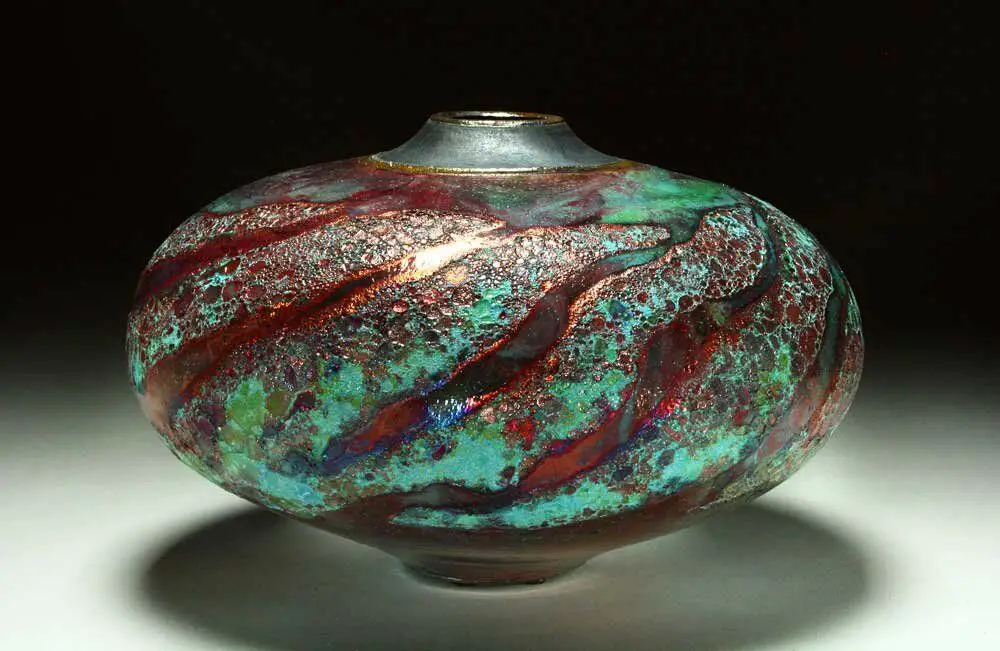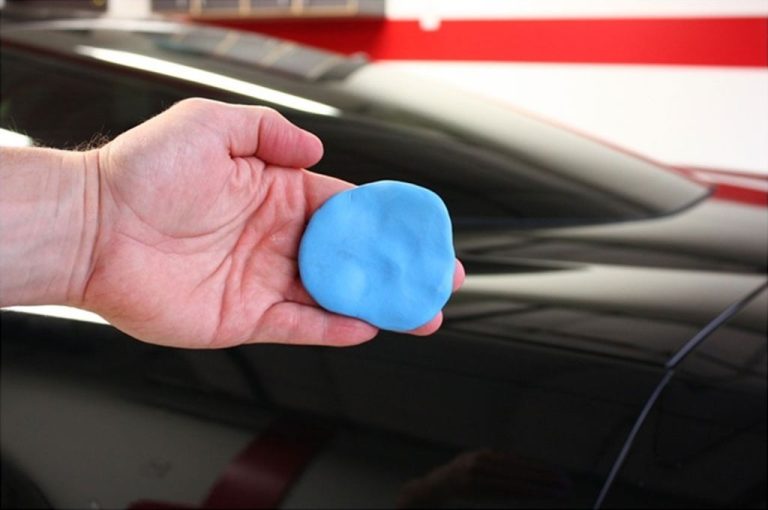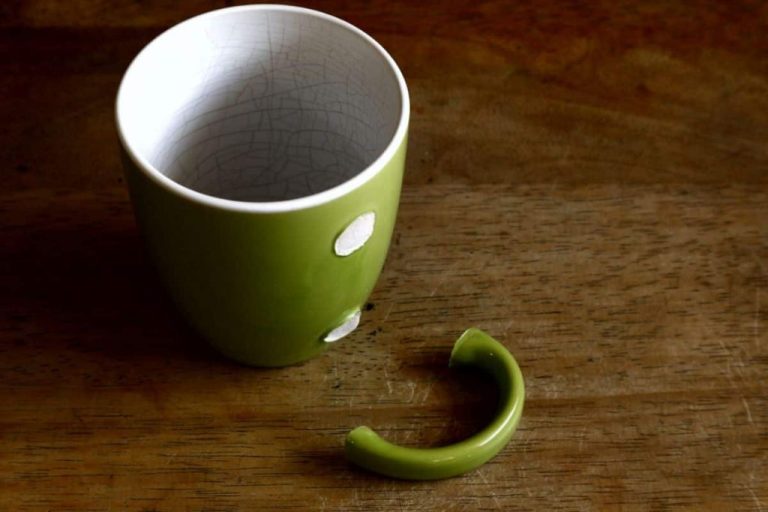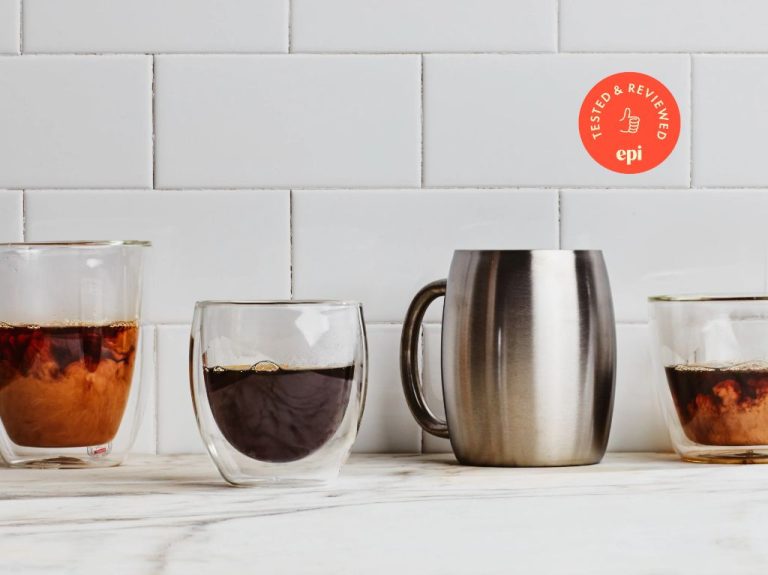Why Is Raku Glaze Not Food Safe?
What is Raku Glaze
Raku glaze is a type of pottery glaze used in the Japanese raku firing technique. The raku technique originated in 16th century Japan and involves removing pottery from the kiln while still red hot and placing it into containers with combustible materials like sawdust or leaves. This process creates random crackling effects in the glaze.
According to Wikipedia, raku glazes are typically high in aluminum, silica, and alkali materials like soda and potash. They have very little calcium, resulting in unstable glazes that crackle and craze when cooled rapidly after firing. Common raku glazes include those made from materials like red iron oxide, copper carbonate, and titanium dioxide. The rapid cooling gives raku glazes their characteristic crackled, lustrous, and iridescent metallic finishes.
Some key characteristics of raku glazes and wares include:
- High porosity from fast cooling
- Crackled, crazed appearance
- Metallic, glossy finishes
- Random, abstract patterns
- Lower firing temperatures around 1600-1800°F
Raku glazing results in one-of-a-kind pieces with an artistic, handcrafted aesthetic. It continues to be popular for studio potters exploring unconventional decorative effects in ceramics.
Composition of Raku Glaze
Raku glazes have a very unique composition compared to standard glazes due to their specialized firing process. They are formulated with exceptionally high levels of lead, copper, and other materials that are potentially toxic if ingested [1]. A typical raku glaze may contain up to 50% lead oxide by weight, along with 15-30% copper oxide. These heavy metal ingredients act as fluxes and colorants in the glaze, producing brilliant metallic effects after raku firing. However, the high lead and copper levels make raku glazes unsafe for contact with food and drink.

In addition to lead and copper, raku glazes frequently incorporate carbonates, sulfates, chlorides, and other materials that can release toxic fumes when fired. The fast firing and smoking process further contaminates the ware. This combination of hazardous ingredients and firing methods is what produces the distinctive crackled, iridescent raku finishes, but also renders the glazes inappropriate and illegal for items meant to touch food [2].
Firing Process for Raku
The raku firing process involves removing pottery from the kiln while it is still at extremely high temperatures, typically between 1,800 to 1,900°F. The pottery is then subjected to a rapid cooling or “quenching” process. This is done by placing the red-hot pottery into containers filled with combustible materials like sawdust or leaves. The materials ignite from the heat, surrounding the pottery with flames and smoke. The pottery is left to cool in the smoking container, which resists thermal shock and allows the chemical reactions between the glaze and atmosphere to occur.1
This quick transition from the kiln’s high temperature to a smoking and cooling environment is essential to the raku process. The rapid temperature change causes the glaze to craze, producing the signature crackled effect of raku ware. The exposure to the carbon-rich atmosphere also encourages interesting interactions between the glaze and smoke that affect the finished visual appearance. Mastering this quick removal and quenching step is key to properly executing raku firings.
Porosity of Raku Ware
Raku ware is known for being much more porous compared to other ceramic glazes and finishes.Raku is fired at lower temperatures which results in the clay body and glaze remaining more porous after firing. This high porosity is one of the defining characteristics of raku pottery.
The porous nature of raku allows the clay body to absorb materials much more readily compared to less porous ceramic bodies. This high absorption rate makes raku unsuitable for many functional uses, especially for containing food or liquids. Materials can soak into the microscopic pores in the clay body and glaze, which raises concerns about toxicity and makes cleaning difficult.
Testing has shown that raku clay bodies have very high porosity and water absorption rates after firing, often over 5% or more. The porous structure leaves the potential for contamination of food and beverages. This permeability is part of what defines raku ware, but also renders it inappropriate for many practical uses.
Toxicity Concerns
Raku glazes and clay bodies contain high levels of potentially toxic materials like lead, copper, and manganese. When raku ware comes in contact with food or drink, these materials can leach out and pose a health risk.
Lead is a particularly concerning toxin that can leach from raku glazes. Even small amounts of lead exposure can cause health problems, especially in children. This is why traditional raku is not considered food safe by the FDA [1].
Copper is another toxin prevalent in raku glazes. High copper exposure through ingestion can cause nausea, vomiting, and diarrhea. For people with Wilson’s disease, excess copper intake can be extremely hazardous [2].
Since raku glazes do not reach high enough temperatures during firing, the glaze remains porous after cooling. This means that food and drink can penetrate the glaze, absorbing toxins like lead and copper. For this reason, most raku ware does not meet FDA food safety standards.
FDA Regulations
The FDA has regulations in place regarding acceptable levels of lead release from ceramicware used for food. According to the FDA’s Guidance for Industry on the Safety of Imported Traditional Pottery, ceramicware must not leach more than 3 parts per million (ppm) of lead under normal use conditions in order to be considered safe for food contact.
Ceramicware that releases lead between 0.5 ppm and 3 ppm can still be sold in the U.S., but it must be labeled with a warning that states “Not Intended for Food Use” or “May Poison Food.” Ceramics that leach lead above 3 ppm cannot be sold at all under FDA regulations.
For ceramicware to be considered food-safe, it must meet specific requirements. Lead-free glazes must be used, and the final bisque ware and glazes must be fired at sufficiently high temperatures to mature the glaze and prevent lead leaching. The FDA recommends firing temperatures above 1000°F to ensure lead-free ceramics.
Additionally, the clay body itself must be free of lead contaminants. Natural clays may contain some lead that can leach out, so testing and analysis is required. The FDA has established limits of no more than 6 ppm lead in the dry clay and no more than 2 ppm lead after firing and glazing.
Meeting these standards allows ceramicware to be labeled “Lead-Free” and safe for food contact under FDA regulations.
Alternatives to Raku
While traditional raku glazes often contain high levels of lead and other toxic materials, there are safer alternatives for creating beautiful functional pottery. Many artisans now focus on developing food-safe and lead-free raku-style glazes and clay bodies.
Low-fire earthenware clays can produce pieces with a crackled raku-like appearance without the risks. Natural clay slips, underglazes, and glazes with ingredients like red iron oxide, copper carbonate, and titanium dioxide can create dramatic raku-style effects.
Slow-cooling the ware after low-fire bisque firing can cause crazing that mimics traditional raku finishes. Some artists also smoke-fire using materials like sawdust, newspaper, or dried leaves to produce carbon effects safely. With creativity and care, potters can achieve stunning raku-inspired looks without compromising health.
Focusing on an aesthetic similar to raku while optimizing food-safe functional pieces opens exciting doors for ceramic artists. Raku effects don’t require hazardous materials when artists explore firing techniques and glaze chemistry.
Proper Uses for Raku
While raku should not be used for food items or liquid storage, it can make beautiful artistic pieces for home decor or display. Raku’s unique cracked and textured glaze surfaces make each piece one-of-a-kind. Some proper uses of raku pottery include:
Decorative Vases or Bowls – Raku vases and bowls can hold dry items like potpourri, shells, pinecones, etc. The porous nature allows fragrance to permeate while the irregular glazed surfaces make striking arrangements.
Wall Hangings or Sculptures – Raku’s earthy, natural look lends itself well to abstract sculptures or wall hangings. The cracked glazes and shapes evoke an organic, handmade feel.
Candle Holders – The irregular, warped shapes of raku can provide interesting holders for candles or tealights. The cracks allow flickering light to shine through in intriguing ways.
Garden Pieces – Raku’s durability makes it suitable for outdoor use. Raku planters, sculptures or birdbaths can add artistic flair to gardens, patios or porches.
Though unsafe for food, raku’s striking glazed textures make it ideal for unique decorative or artistic pieces.
Care and Maintenance
Raku ware is highly porous and fragile, so it requires gentle care and handling. According to RAAQUU (https://www.raaquu.com/blogs/articles-and-announcements/caring-for-raku-pottery-a-comprehensive-guide), raku pieces should always be hand washed to avoid damaging the porous surface.
It’s important to never use abrasive cleaners or scrubbing pads when cleaning raku, as this can scratch and damage the finish. Simply use mild soap and warm water, gently wiping the surface. Rinse thoroughly afterwards.
RAAQUU (https://www.raaquu.com/) advises allowing raku pieces to air dry completely before storage or use. Any trapped moisture can damage the porous clay body over time.
With proper gentle care and hand washing, raku pottery can remain beautiful for years. But harsh cleaning and abrasives should always be avoided to preserve the delicate fired surface.
Conclusion
In summary, raku glaze contains toxic materials like lead and cadmium that can leach into food and drink. The porous nature of raku ware enables contamination even after firing. While beautiful, raku’s origins as a Japanese tea ceremony pottery means it was never intended to be utilitarian or food-safe. The FDA prohibits lead and cadmium from coming into contact with food. There are safer ceramic glazes for functional ware. Raku is best used decoratively. It should never be used for cooking, drinking or food presentation purposes. The toxicity risks are simply too high.
In conclusion, raku is not food-safe due to its lead and cadmium content, porous firing, and unintended functionality. It poses contamination risks that make it inappropriate for culinary use.





